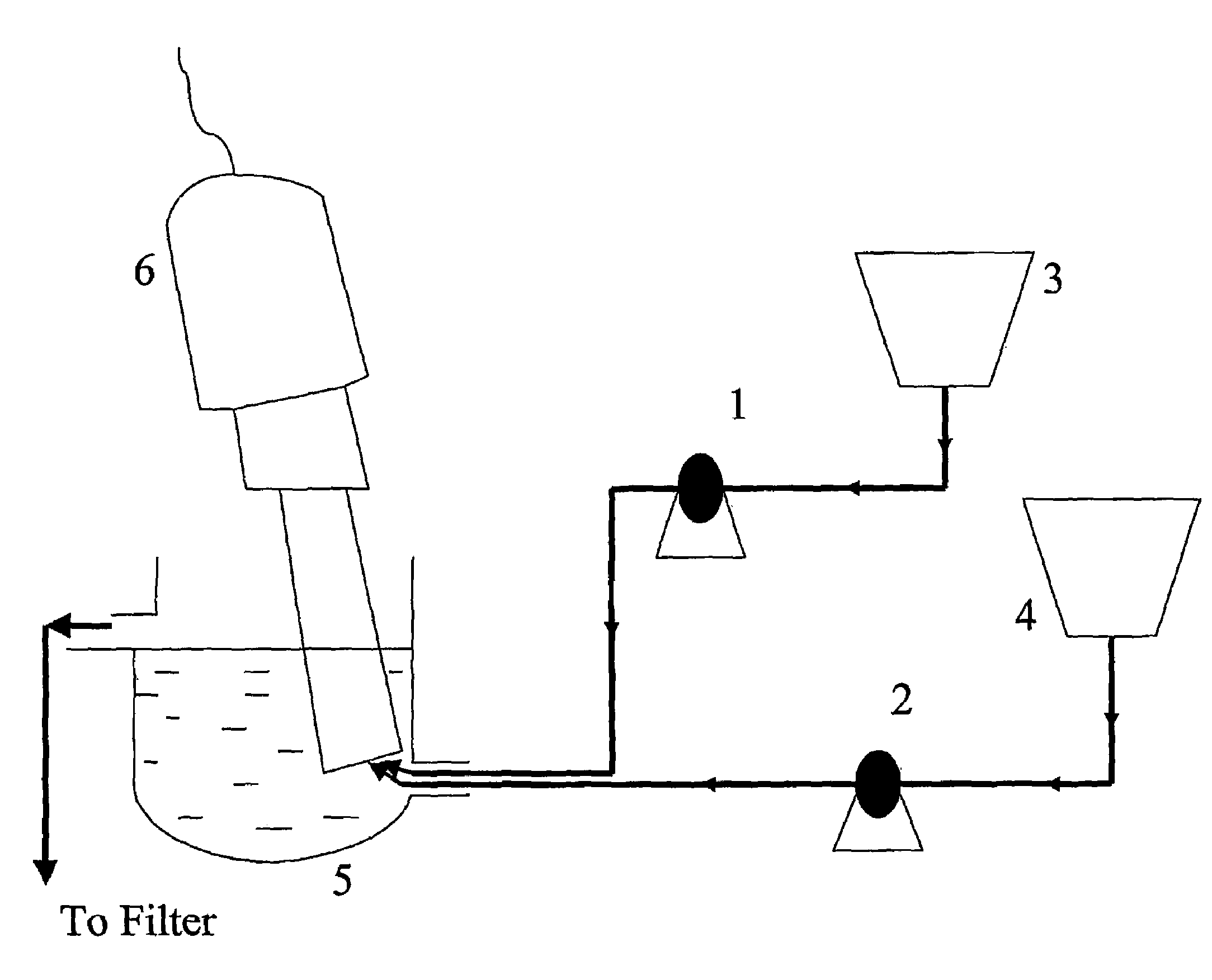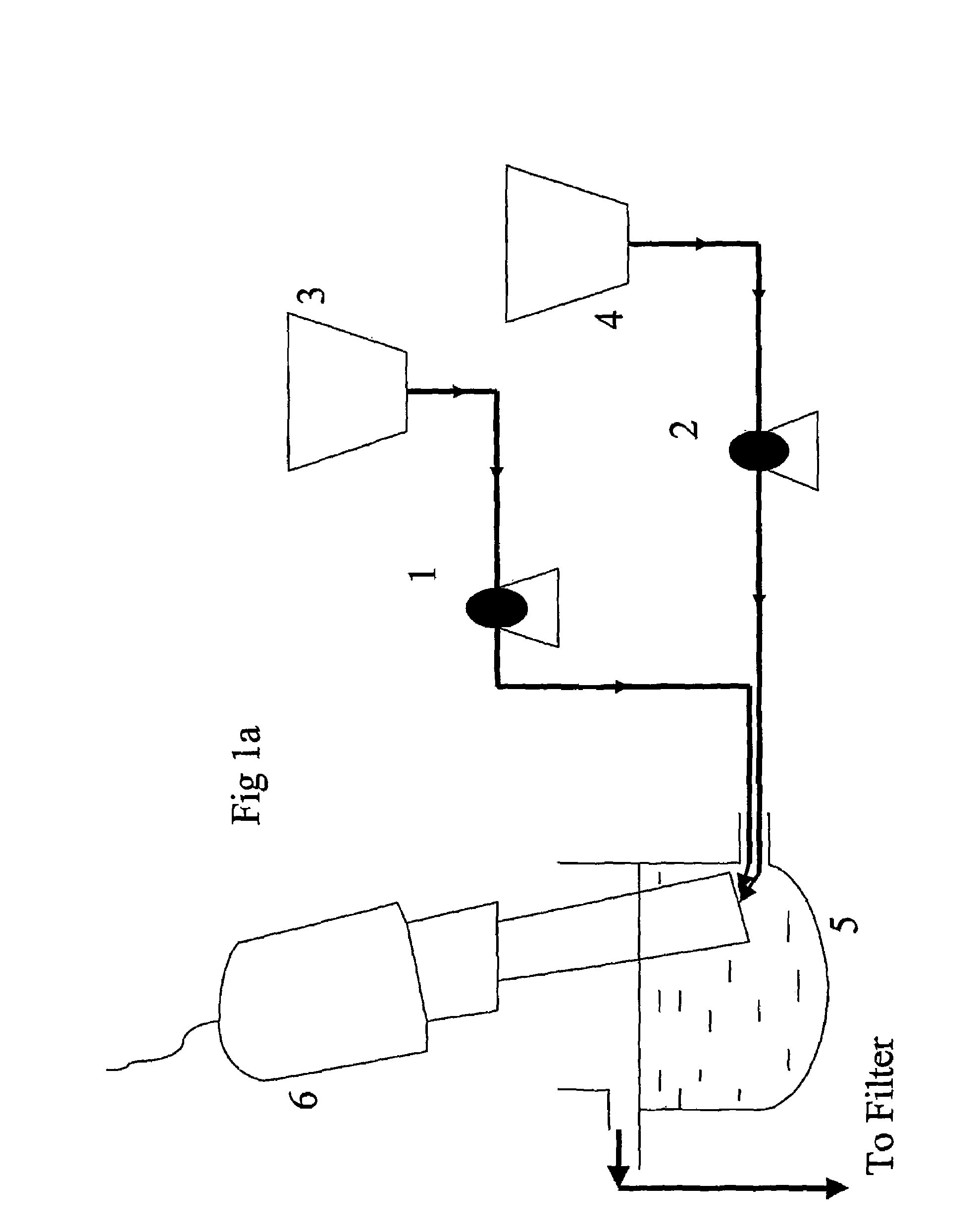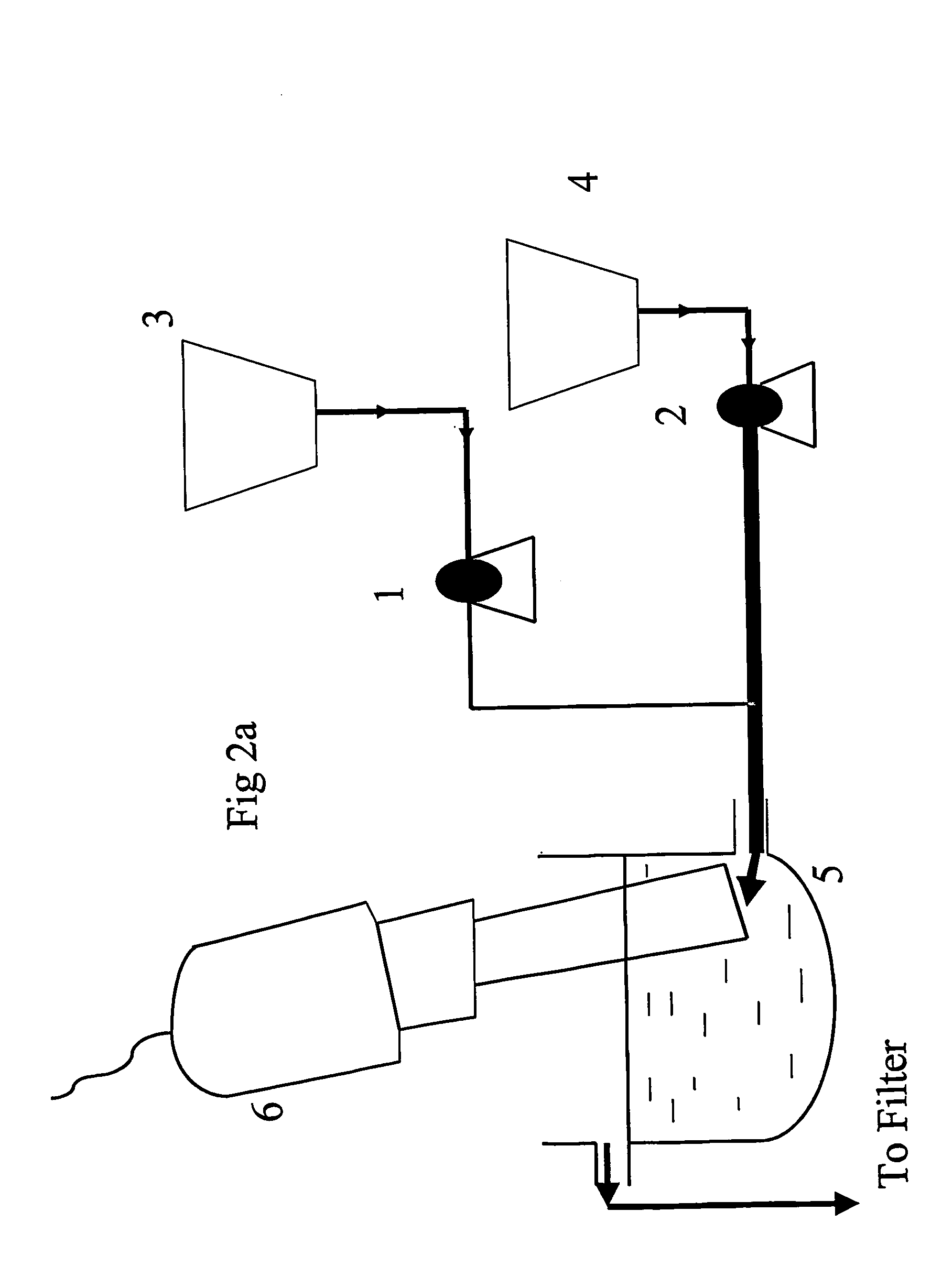Apparatus and process for preparing crystalline particles
a technology of apparatus and crystalline particles, applied in the field of apparatus for preparing crystalline particles, can solve the problems of micronisation and milling processes, micronisation or milling products may be more susceptible to moisture uptake than crystalline products, and general product loss, etc., to achieve efficient and economical, reduce hazards, and reduce size
- Summary
- Abstract
- Description
- Claims
- Application Information
AI Technical Summary
Benefits of technology
Problems solved by technology
Method used
Image
Examples
example 1
Distributions of Particles of Crystalline Fluticasone Propionate
Experimental Procedure
[0103]The drug substance (fluticasone propionate, FP) (1 wt) was dissolved in acetone (15-20 vols, according to experiment) by heating to 56° C. and then allowed to cool to between 25 and 35° C. A first peristaltic pump was connected to the said FP / acetone solution and a second peristaltic pump was connected to a water reservoir wherein the water was in the temperature range of about 3-30° C. Prior to starting the pumps the mixing chamber was filled with a solution of acetone and water (the ratio of each being the same as the relative pumping rates from the two reservoirs). By doing this, the relative concentrations of the water to acetone remained constant throughout the crystallisation. The temperature of the mixing chamber was maintained in the range about −10 to +30° C. by passing tempered heat transfer fluid through the vessel jacket. The FP / acetone solution inlet and water inlet were arranged...
example 2
[0110]An aluminium canister may be charged with particles of fluticasone propionate prepared according to the invention (e.g. as described in Example 1, run 4). A metering valve (Valois) may be crimped on and liquefied HFA134a added through the valve.
example 3
[0111]A dry powder composition for inhalation may be prepared by mixing particles of fluticasone propionate prepared according to the invention (e.g. as described in Example 1, run-4) with milled lactose.
PUM
| Property | Measurement | Unit |
|---|---|---|
| aerodynamic diameter | aaaaa | aaaaa |
| aerodynamic diameter | aaaaa | aaaaa |
| aerodynamic diameter | aaaaa | aaaaa |
Abstract
Description
Claims
Application Information
 Login to View More
Login to View More - R&D
- Intellectual Property
- Life Sciences
- Materials
- Tech Scout
- Unparalleled Data Quality
- Higher Quality Content
- 60% Fewer Hallucinations
Browse by: Latest US Patents, China's latest patents, Technical Efficacy Thesaurus, Application Domain, Technology Topic, Popular Technical Reports.
© 2025 PatSnap. All rights reserved.Legal|Privacy policy|Modern Slavery Act Transparency Statement|Sitemap|About US| Contact US: help@patsnap.com



